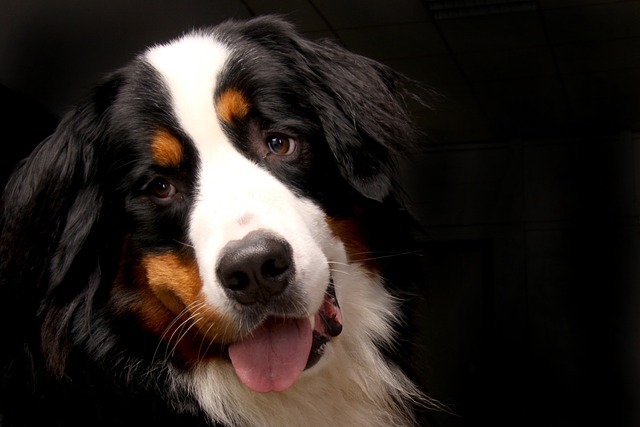
What is glaucoma in a dog?
You might notice your dog squinting more at mealtime or avoiding bright sunlight—these small changes could be early signs of a serious eye condition.
If you’re a new dog parent in the US—maybe you’re kneeling on your Chicago apartment floor, clippers in hand, trying to trim your 7-month-old Pomeranian’s matted belly fur, when she yelps and pulls away—you’ve probably frozen, wondering: Did I hurt her? What part of her body am I supposed to avoid? Clipping a dog isn’t just about trimming excess fur; it’s about knowing the “danger zones”—spots where thin skin, hidden blood vessels, or sensitive nerves make nicks, cuts, or pain way more likely. Let’s break these zones down simply, so you can clip your pup safely (and keep her calm).
First, let’s get the basics straight: A dog’s skin is thinnest in areas where it folds, stretches, or has lots of movement—think of it like your own skin: your inner elbow is way more sensitive than your shoulder. These spots have fewer layers of protection, so even a gentle clipper pass can scrape or cut. The biggest danger zones are: underarms (axilla)—where skin rubs together, hiding tiny blood vessels; ear edges and behind the ears—paper-thin skin that tears easily; paw pads and between toes—rough skin that clippers can catch on, plus quicks (the pink part of nails) that are easy to nick; belly and groin—soft, stretchy skin that moves when your dog breathes or wiggles; and tail base—a cluster of nerves that makes even light pressure feel painful. Take Lisa, a first-time owner in Texas: She clipped her Golden Retriever’s underarm too close, and it bleed for 15 minutes. Now her pup runs when she sees the clippers—all because she didn’t know that spot was a danger zone.

Here’s how to avoid these zones (or clip them safely), step by step: Start with the right tools—skip human clippers (they get too hot!) and use dog-specific ones with adjustable guards (plastic attachments that keep blades away from skin). Grab blunt-tipped safety scissors for tight spots, and a bag of freeze-dried salmon treats (something your pup will beg for). Before clipping, brush your dog thoroughly—mats pull skin tight, making cuts more likely. For underarms: Use scissors, not clippers—hold the fur up gently (so skin stays loose) and snip in small, slow strokes. For ears: Only trim the fur around the ear (not the edge!)—if it’s matted, ask a groomer for help instead of forcing it. For paws: Lift each paw, spread the toes gently, and clip between them with a small guard (like a #10)—keep the clipper parallel to the pad, never straight down. Always pause to give a treat when your pup stays still—positive reinforcement turns clipping into a game, not a chore. Never scold her if she wiggles or pulls away; punishment makes fear worse (and goes against US animal welfare norms that ban harsh treatment). If you do nick her, don’t panic—use pet-safe styptic powder to stop bleeding, then cuddle her to calm her down.
Now, let’s tie in rules and habits that matter. Every US state requires core vaccines (distemper, parvovirus)—before you take your freshly clipped pup for a walk (to show off her new look), make sure her shots are up to date. Skipping vaccines isn’t just risky for her health; it could get you fined $150 or more in California or New York. When you’re out walking, always clean up her poop—cities from Seattle to Boston have fines up to $300 for leaving waste, and it’s part of being a respectful neighbor. If you live in an apartment (common in NYC or Boston), sweep up clipped fur right away—loose fur clogs vents and can bother neighbors with allergies. And if you clip outside on your balcony, don’t let fur blow into other people’s spaces—small courtesies keep community life smooth.
Clipping your dog’s danger zones isn’t about being perfect; it’s about being careful. With the right tools, lots of treats, and follow-through on local rules, you’ll keep your pup safe—and turn clipping into a calm bonding moment. Before you know it, she’ll be sitting still, waiting for her next treat mid-trim.

You might notice your dog squinting more at mealtime or avoiding bright sunlight—these small changes could be early signs of a serious eye condition.

Let’s set the scene: It’s a sweltering Phoenix afternoon—105°F outside—and you rushed your 2-year-old Lab mix, Cooper, on a quick walk to “get it over with.”

Let’s get real: You’re in your Miami apartment, watching your 3-year-old Corgi, Loki, struggle to climb the stairs to your second-floor unit.

Many dog owners brush off occasional scratching as just “dog behavior,” but persistent itching often signals something more—like a food allergy.

You might first notice your dog scratching more than usual—chewing at their paws until the fur looks thin, or rubbing their face against the couch nonstop.

Let’s be real: You’re standing in your Chicago apartment, watching your 3-year-old Beagle, Max, huff and puff just to climb onto the couch.